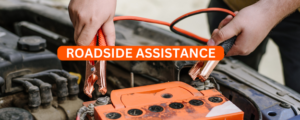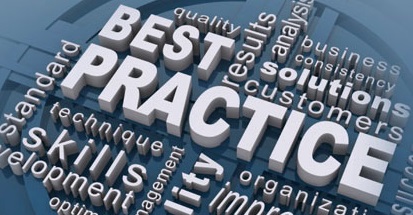Affordable Choices for Deck Building Materials
Affordable deck building materials include pressure-treated wood, a cost-effective option with extended lifespan. Cedar and redwood are naturally resistant, providing beauty and durability. Composite decking is another option, consisting of wood and plastic fibers, offering weather-resistance and minimal maintenance. Vinyl is another durable, easy-to-maintain choice, whilst aluminum is lightweight, long-lasting, and eco-friendly. Selections should take into account safety, chemicals, durability, maintenance, and aesthetics. Deepening your understanding of these options will help you select the best affordability-versus-quality balance to suit your specific deck needs.

Pressure-Treated Wood: A Budget-Friendly Option
Navigating the realm of affordable deck building materials, pressure-treated wood emerges as a budget-friendly option due to its durability and low cost. This type of wood undergoes a process that involves the infusion of chemical preservatives deep into the wood fibers. These chemicals help protect the wood from fungal decay, termites, and other pests. Consequently, pressure-treated wood boasts a significantly extended lifespan compared to untreated wood, making it a practical choice for outdoor structures like decks.
Pressure-treated wood also offers an attractive balance between quality and cost. Despite its affordable pricing, it does not compromise on the structural integrity required for deck building. Its availability in a wide range of grades and dimensions further adds to its appeal, allowing homeowners to choose according to their specific needs and budget constraints.
In terms of aesthetics, pressure-treated wood may not possess the natural beauty of cedar or redwood. However, its light natural tone provides an excellent canvas for stains and paints. This adaptability empowers homeowners to customize their decks to match their personal style and the architectural character of their homes. Thus, pressure-treated wood stands as a worthy contender in the realm of affordable deck building materials.
Cedar and Redwood: Natural Beauty
Transitioning from pressure-treated wood, cedar and redwood emerge as naturally beautiful alternatives in the arena of deck building materials. These species offer a blend of aesthetics and durability that appeal to homeowners who desire a more natural looking deck.
Cedar, known for its rich, warm color and pleasant scent, is highly resistant to insect damage and decay. Redwood, on the other hand, is admired for its vibrant reddish-brown color and straight grain. It also possesses innate resistance to rot and insects. Both woods are lighter and easier to work with than pressure-treated wood, making them popular choices amongst DIY enthusiasts.
To provide a clearer comparison, below is a table outlining their key characteristics:
| Cedar | Redwood | |
|---|---|---|
| Color | Warm, rich | Vibrant reddish-brown |
| Grain | Straight to slightly wavy | Straight |
| Durability | High | High |
| Workability | Easy | Easy |
Composite Decking: Durable and Low-Maintenance
Have you considered composite decking, a highly durable and low-maintenance option in the realm of deck building materials? Composite decking, made from a blend of wood and plastic fibers, offers a host of benefits that make it a popular choice among homeowners and contractors alike.
To further illustrate, let’s consider the following advantages of composite decking:
- Durability: Composite decks are designed to withstand weather conditions across the board – from scorching summers to freezing winters. Unlike traditional wood, it won’t crack, warp, or split, making it a long-lasting choice.
- Low maintenance: Unlike wood, composite decking doesn’t require frequent staining, sealing, or painting. A simple cleaning routine is enough to maintain its appearance and integrity.
- Aesthetics: Composite decking comes in a variety of colors and finishes, allowing you to create a deck that complements your home’s exterior.
- Eco-friendly: Since it’s made from recycled materials, choosing composite decking is a step towards sustainable living.
Vinyl Decking: Easy to Clean
Vinyl decking, notably easy to clean, presents an affordable option for those seeking low-maintenance deck materials. This material’s durability contributes to its overall cost-effectiveness, as it withstands various weather conditions and resists wear over time. We will expound on the maintenance procedures of vinyl decks and further discuss the durability of vinyl as a decking material.
Maintenance of Vinyl Decks
Offering both aesthetic appeal and practicality, vinyl decks are remarkably easy to maintain and clean, making them a popular choice for homeowners seeking durability and convenience. Vinyl decks resist staining, eliminating the need for frequent painting or staining, and their smooth, non-porous surface simplifies the cleaning process.
To maintain the beauty and longevity of your vinyl deck, consider the following:
- Regularly sweep or vacuum to remove dirt and debris.
- Clean spills promptly to prevent staining.
- Use a mild detergent and soft-bristled brush for deeper cleaning.
- Avoid abrasive cleaners, which can scratch the surface.
Durability of Vinyl Material
The exceptional durability of vinyl decking, characterized by its ability to withstand harsh weather conditions and resist damage from prolonged use, is a testament to its robustness. This material retains its structural integrity and aesthetic appeal even after years of usage, providing a long-lasting solution for homeowners.
Vinyl decking is immune to the typical threats that can compromise other decking materials. It resists rot, insect infestation, and it doesn’t warp, peel, or crack. Its resilience to sun exposure is another notable advantage, with the material maintaining its color and not fading over time. As such, vinyl decking not only meets the practical needs of a deck but also ensures it remains a welcoming space for gatherings. With its durability and ease of maintenance, vinyl is certainly a cost-effective and reliable choice for deck construction.
Aluminum Decking: Lightweight and Long-Lasting
In the realm of affordable decking materials, aluminum stands out for its exceptional lightweight nature and prolonged durability. Not only does it last longer than most wood species, but it also requires less maintenance, making it a cost-effective choice for homeowners. Despite being lightweight, aluminum decking is known for its strength and resilience against various weather conditions.
The unique attributes of aluminum decking include:
- Ease of installation: Its lightness allows for quick and effortless setup.
- Longevity: Aluminum decks can last up to 30 years or more with proper care, surpassing many wood types.
- Low maintenance: It doesn’t rot, warp, or splinter, and is resistant to pest infestation.
- Eco-friendliness: Aluminum can be recycled, making it a greener choice than some materials.
Aluminum decking offers a perfect blend of affordability, durability, and performance. Its sleek, contemporary look can also enhance the aesthetic appeal of your outdoor space. So, if you’re looking for a decking material that’s light on your pocket and offers lasting value, aluminum might just be the right choice for you.
Reclaimed and Recycled Materials: Eco-Friendly Choices
Shifting gears to another economical and environmentally conscious option, reclaimed and recycled materials emerge as a viable choice for deck building. With a strong inclination towards sustainable construction, these materials provide an opportunity to curate a unique, eco-friendly outdoor space while also reducing the strain on natural resources.
Reclaimed wood, sourced from old buildings, barns, or factories, carries a distinct character and history, making your deck a conversation piece. Its durability and inherent resistance to rot and insects make it a practical choice. On the other hand, recycled plastic lumber, composed of milk jugs, detergent bottles, and plastic bags, offers a long-lasting, maintenance-free alternative. It is resistant to cracking, splitting, and weather-induced damage.
Incorporating reclaimed or recycled materials in your deck construction not only contributes to environmental sustainability but also creates an inviting, warm atmosphere. It’s a chance to express your personal aesthetics while endorsing a green lifestyle. However, sourcing and handling these materials require careful planning and consideration. Always ensure the materials are safe, free of harmful chemicals, and structurally sound for your decking project.






